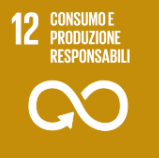Aquaponics
Aquaponics is an integrated system that allows you to optimize the exploitation of water and energy resources with the aim of producing aquatic plants and animals (both ornamental and edible) in complete respect of the environment.
Aquaponic systems exploit the so-called “closed cycle”. The water used for fish breeding is used for the cultivation of plants, thus creating a continuous exchange between the animal and vegetal parts.
The water coming from the fish breeding tanks, loaded with waste substances, is recirculated in the growth beds. The waste substances, interacting with the bacteria present in the growth beds, produce nutrients for the plants, which in turn filter the water, returning it purified and thus allowing the start of a new cycle.
The approach we used to create aquaponic systems was to reproduce as faithfully as possible what happens in nature.
The observation of the biotopes of farmed fish species has led to increasingly complex systems in which technological components come together to support the ecosystem, allowing it to be monitored.
In order to make the aquaponic system more performing and versatile, natural and artificial organic components have been added such as worms, bivalves and planted aquatic plants.
Compared to a traditional aquaculture or hydroponic system, the aquaponic system produces various advantages:
- Reduction of water consumption. The natural water filtering system avoids the accumulation of nitrogenous substances produced by fish farming
- Self-production of nutrients for plants. The waste from the fish tanks is used as a source of nourishment for the plants, thus allowing the system to fully exploit the biological cycle
- Natural water purification and filtration. The combined action of plants, fish and bacteria allows you to keep the aquaponic environment balanced in a natural way
- Less dependence on water. Contrary to traditional agriculture, the aquaponic system is not subject to irrigation cycles with relative dispersion of water on the land, evaporation, percolation and run-off
- Absence of chemical fertilizers and fertilizers. The nutrients necessary for plant growth are provided by fish, without the need for supplements with fertilizers or chemical products
- Less effort in growing plants. Once the growing beds have been sown, you will only have to wait for the harvest time without working the soil
- Economic saving. Eliminate the costs for the purchase of pesticides, fertilizers and fuel for agricultural vehicles
- Self-production of natural foods, available all year round
- Ease of management. The principles of operating an aquaponics system can be learned through a basic course
The aquaponic system meets the Sustainable Development Goals defined by the United Nations as a strategy “to achieve a better and more sustainable future for all”.




